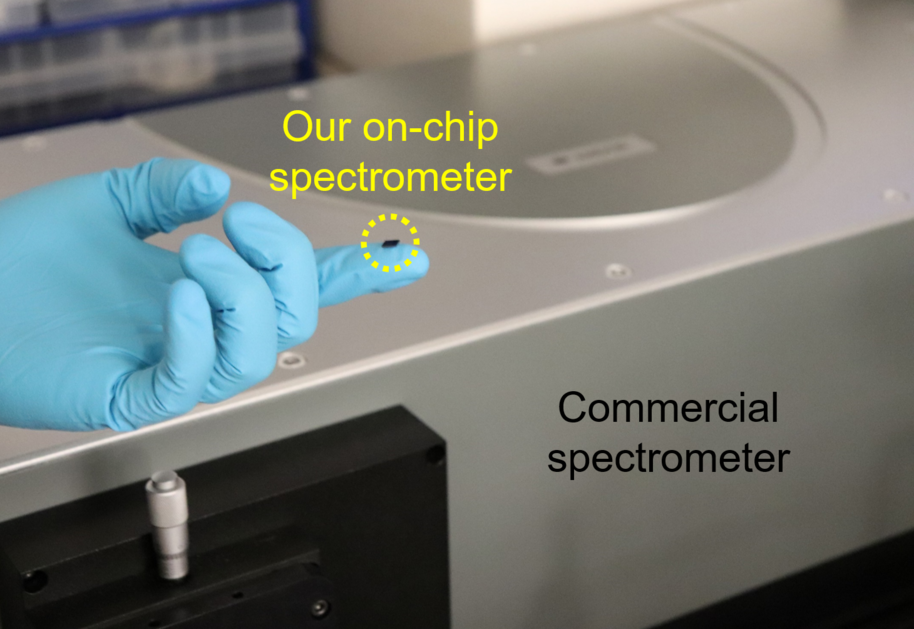小惑星リュウグウのサンプルに含まれる鉄の同位体比から、その起源は木星と土星の軌道の外側にあることが示唆される Iron isotopes in samples from asteroid Ryugu suggest its origin to lie beyond the orbits of Jupiter and Saturn
2022-10-20 マックス・プランク研究所
リュウグウの「成分リスト」は、ある重要な点において、典型的な炭素を多く含む隕石のそれとは大きく異なっていることが判明した。リュウグウの成分表は、一般的な炭素を多く含む隕石とは大きく異なり、太陽系外縁部に存在する希少な隕石と密接な関係にあることが示された。
研究グループは、小惑星のサンプルに含まれる鉄の同位体に着目した。同位体とは、鉄のような同じ化学元素でも、原子核に含まれる中性子の数と重さだけが異なるものを指す。太陽系が誕生したとき、ある種の元素の同位体は均等に分布していなかったと考えられている。そのため、天体が形成された場所によって、異なる同位体比を持つ建材が利用された。そのため、同位体比は現在でも惑星の起源を示す情報を含んでいる。
今回の分析では、小惑星リュウグウの4つのサンプルと、比較のためにさまざまな隕石群を代表する13の隕石サンプルを調べた。その結果、リュウグウと同様、ほとんどの隕石が炭素に富んでいることがわかった。
リュウグウの岩石サンプルは、日本で精巧に化学的に調製された後、シカゴに運ばれ、マルチコレクター・プラズマ質量分析計で分析し、さまざまな鉄同位体の比率を数百万分の一の精度で測定することに成功した。
その結果、小惑星リュウグウの鉄同位体比は、イブナ型隕石として知られるCIコンドライトを除いて、ほとんどの隕石と大きく異なっていることがわかりました。CIコンドライトはイブナ型隕石と呼ばれ、タンザニアで発見されたこの隕石にちなんで名づけられた。
本日、研究グループは、この親密な関係を示すさらなる証拠を「サイエンス」誌に報告した。リュウグウのサンプルは、サンプルカプセルで地球に運ばれる間に吐き出されたガスも、これらのエキゾチックな隕石との類似性を示している。
<関連情報>
- https://www.mpg.de/19388956/1020-aero-asteroid-ryugu-a-traveler-from-the-edge-of-the-solar-system-151060-x
- https://www.science.org/doi/10.1126/sciadv.add8141
太陽系外から見たリュウグウの核合成の遺産 Ryugu’s nucleosynthetic heritage from the outskirts of the Solar System
Timo Hopp,Nicolas Dauphas,Yoshinari Abe ,Jérôme Aléon,Conel M. O’D. Alexander,Sachiko Amari ,Yuri Amelin ,Ken-ichi Bajo ,Martin Bizzarro ,Audrey Bouvier,Richard W. Carlson,Marc Chaussidon,Byeon-Gak Choi ,Andrew M. Davis,Tommaso Di Rocco ,Wataru Fujiya ,Ryota Fukai ,Ikshu Gautam ,Makiko K. Haba ,Hiroshi Hidaka,Hisashi Homma,Peter Hoppe,Gary R. Huss,Kiyohiro Ichida,Tsuyoshi Iizuka,Trevor R. Ireland,Akira Ishikawa,Motoo Ito,Shoichi Itoh,Noriyuki Kawasaki,Noriko T. Kita,Kouki Kitajima,Thorsten Kleine,Shintaro Komatani,Alexander N. Krot,Ming-Chang Liu,Yuki Masuda,Kevin D. McKeegan,Mayu Morita,Kazuko Motomura,Frédéric Moynier,Izumi Nakai,Kazuhide Nagashima,David Nesvorný,Ann Nguyen,Larry Nittler,Morihiko Onose,Andreas Pack,Changkun Park,Laurette Piani,Liping Qin,Sara S. Russell,Naoya Sakamoto,Maria Schönbächler,Lauren Tafla,Haolan Tang,Kentaro Terada,Yasuko Terada,Tomohiro Usui,Sohei Wada ,Meenakshi Wadhwa,Richard J. Walker,Katsuyuki Yamashita ,Qing-Zhu Yin,Tetsuya Yokoyama ,Shigekazu Yoneda,Edward D. Young,Hiroharu Yui,Ai-Cheng Zhang ,Tomoki Nakamura,Hiroshi Naraoka,Takaaki Noguchi ,Ryuji Okazaki,Kanako Sakamoto,Hikaru Yabuta ,Masanao Abe ,Akiko Miyazaki ,Aiko Nakato,Masahiro Nishimura,Tatsuaki Okada,Toru Yada,Kasumi Yogata,Satoru Nakazawa,Takanao Saiki,Satoshi Tanaka,Fuyuto Terui,Yuichi Tsuda ,Sei-ichiro Watanabe,Makoto Yoshikawa ,Shogo Tachibana,Hisayoshi Yurimoto
Science Advances Published:20 Oct 2022
DOI:doi/10.1126/sciadv.add8141

Abstract
Little is known about the origin of the spectral diversity of asteroids and what it says about conditions in the protoplanetary disk. Here we show that samples returned from Cb-type asteroid Ryugu have Fe isotopic anomalies indistinguishable from Ivuna-type (CI) chondrites, which are distinct from all other carbonaceous chondrites. Iron isotopes, therefore, demonstrate that Ryugu and CI chondrites formed in a reservoir that was different from the source regions of other carbonaceous asteroids. Growth and migration of the giant planets destabilized nearby planetesimals and ejected some inwards to be implanted into the Main Belt. In this framework, most carbonaceous chondrites may have originated from regions around the birthplaces of Jupiter and Saturn, while the distinct isotopic composition of CI chondrites and Ryugu may reflect their formation further away in the disk, owing their presence in the inner Solar System to excitation by Uranus and Neptune.



